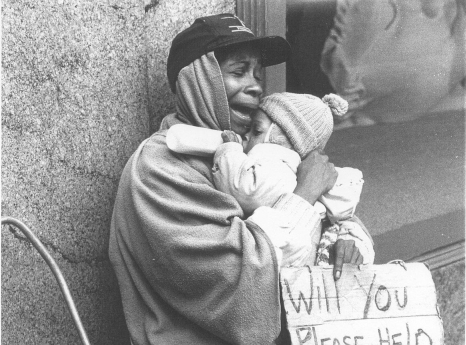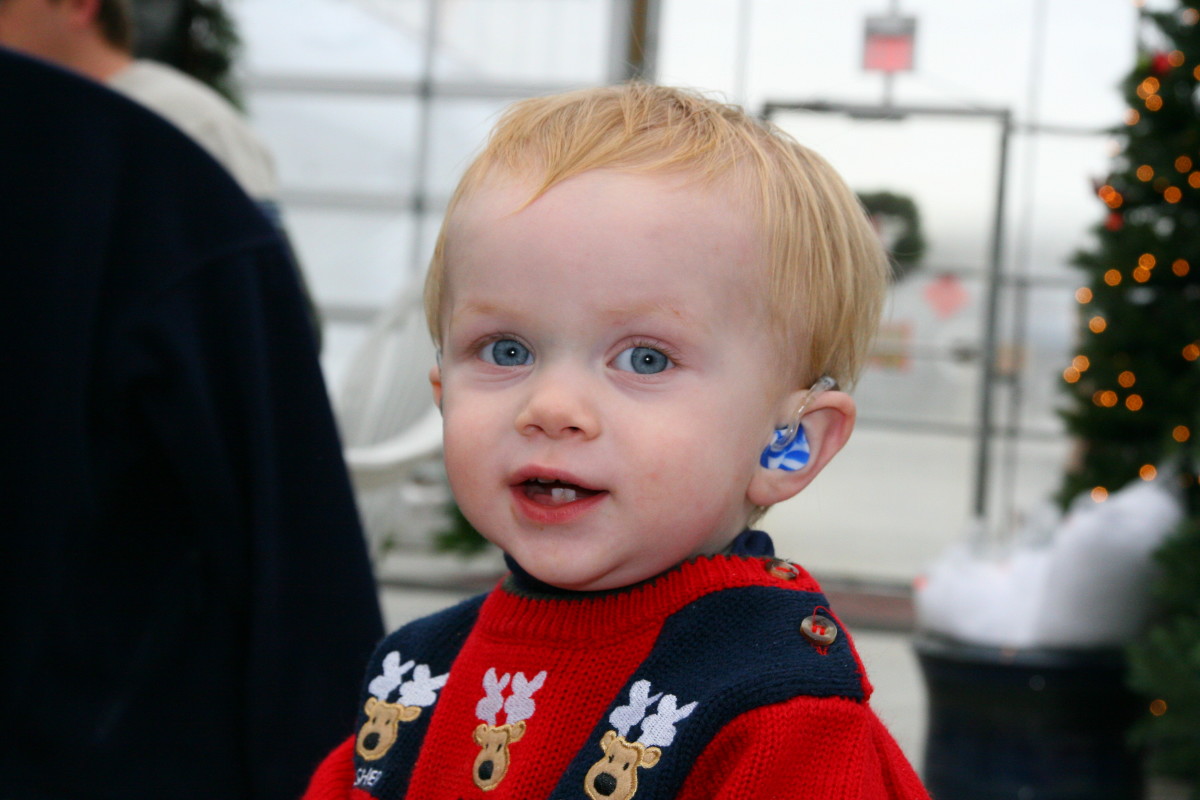Homeless Children: The Growing Epidemic

What I heard, What I saw, and What I Intend To Do About It.
The typical image of a homeless person is a male in his mid 30’s to late 60”s living in abject poverty. You see him hanging out at soup kitchens, homeless shelters, and on street corners. His mobility includes shuffling between makeshift street locations while sleeping on steam grates, in doorways, under roadway overpasses or temporary housing shelters when available. We may see these men at busy street intersections with creative signs often depicting some religious message, the most common being the favorite ‘God loves You” – or – ‘God Bless You” – or – “Disabled Veteran.” We often walk, or drive quickly by them without establishing eye contact thereby avoiding the guilt of not either wanting to, or having the ability to offer assistance. We assume they represent the majority of homeless people in any major city across America and around the world – and their circumstances are due to their own misjudgment, or laziness, or for reasons within their control.
However, this word picture of the homeless population is not an accurate one. It does not reflect the true reality of homelessness. The unfortunate reality is that single men represent only a small fraction of the homeless population in America, and most major cities across the globe. The faces you don’t see are families who now make up more than 44 percent of this homeless population - particularly in America. Among this 40% are more than 1.5 million homeless children. The statistics are alarming and growing each day. According to the numbers calculated by The National Center on Family Homelessness, 39% percent of the homeless population consists of children less than 18 years of age. 40% of homeless children are less than five years old. 85% percent of homeless families are headed by single mothers. It is estimated by the NCFH that these children’s are homeless at lease ten to eleven months at a time – and their homelessness continues through adulthood.
As bad as this may sound it is nothing new – in America. What is new are the numbers which has grown significantly in the past ten years, spiking within the past two years - partly due to the current mortgage crisis resulting in an astronomical rate of home foreclosures. There are various reasons for the increase in homeless families which include the inability of the parents to find decent paying jobs allowing them the opportunity for alternative, affordable housing. Other factors may include the inability of the parents to find any form of employment at all. Draw your own conclusions and it will not change the fact that the poverty rate among child homelessness in America has risen to more than 19 percent which is much higher than any other age group. Other factors of child homelessness, according to The NCFH include parent substance abuse, mental illness, domestic violence, and jail or prison release, to include changes or cuts in public assistance programs designed to help families stay above the poverty line. In the early 1990’s the welfare reform legislation was drastically changed resulting in a significant decrease in the number of families receiving benefits. During this time frame the numbers on the welfare rolls dropped drastically but not because of employment or families suddenly receiving financial stability. They were simply dropped from the system because of lack of government funding of social programs. Many families who were receiving welfare benefits struggled to get needed medical care, food, and housing. In addition, many lost health insurance, despite their eligibility for continued Medicaid.
While these sudden changes in the system affected millions of low to moderate income families it hit the children the hardest. While most went from a stable home to no home at all, others were born homeless. Statistical data from the NCFH suggests that homeless children often face surmountable problems from the time of birth, continuing throughout their formative years. The NCFH’s data also concludes that this population are four times more likely to have a low birth weight and more likely to need special care immediately after birth, particularly in the area of nutrition. Homeless children experience hunger and starvation at rates twice as high as other children contributing to learning disabilities due to malnutrition and poor self-esteem. This reality, accompanied with poor living conditions weakens a child's resistance to disease resulting in long term illness. Homeless children suffer from various medical complications, often receiving little or no treatment because of their parent’s inability to pay. These complications may include high rates of acute illness including three times as many ear infections, five times more diarrhea and stomach problems. Of this homeless child population 10% reported sexual abused which is three times the rate of other children. An estimated 20% of this population does not attend school, of any kind. They suffer from insomnia and they fear the darkness, crying at night because of the uncertainty of tomorrow. For these unfortunate children a new day is not a new beginning – it’s the continuation of a bad ending.
Homeless children face many unfortunate obstacles which can not be listed in this hub. What is listed are but a few of the many complications associated with child homelessness. For more statistics on the homeless child epidemic, and the long term complications Google “The National Center on Family Homelessness": See a video at: http://www.youtube.com/watch?v=oSaIMMetVUI&feature=related
What I heard, what I saw, and what I intend to do about it.
My physical fitness routine includes a two mile roundtrip walk after work and a seven mile roundtrip walk on Sunday mornings.
What I heard: On this particular Sunday morning while on a seven mile roundtrip walk I decided to go through Chinatown, a small Asian business community just south of downtown Seattle. I decided to take a shortcut through an alley to avoid a flooded street which had been drenched the night before due to a heavy rain. As I was walking through the alley, I heard the cry of what sounded like an infant child. It was a piercing cry of fear, uncertainty, and hunger. It was the type of cry that would stop a person in their tracks, which I did as I looked in the direction of the cry.
What I Saw: After cautious searching I saw an infant child and her young mother crouched in the fetal position beneath the steps of an abandoned building. They were lying on what appeared to be an old carpet for bedding. The mother looked out at me through the broken steps of the unsafe building with fear and a sense of protection for her infant child, while at the same time attempting to keep the child quiet. I reached out to the young mother but she grabbed her child, covering her as if to protect her from this male stranger. I asked if she needed help but she would not speak. She appeared frightened as the child’s cry became more profound. Sensing the young mothers fear and protection for her young infant I then became very cautious as I did not know the full extent of her situation. As far as I knew she could have been held at gun point which may explain her silence when I reached out. Therefore, I turned and quickly walked away. As I was preparing to dial 911 for assistance I noticed two policemen on bikes and quickly got their attention. I then reported what I saw and directed the policemen to the young mothers’ location. The policemen went to the location and after reassuring the mother, she reluctantly reached out to them. Once the mother was in their custody I left the scene and continued my walk.
What I intend to do about it: I am not sure what I can do about the overall problem of child homelessness but what I intend to do is continue my research on the epidemic in Seattle to find ways of getting productively involved. I am currently working with a non profit agency to determine how I can legally and safely use my home to provide assistance to the families. Volunteer work in this area is nothing new to me. A few years ago I did volunteer work with an agency called Childhaven who sponsored a program to feed the homeless teenagers in Seattle. The program was titled “Street Links”. It was a successful program which supported homeless teenagers from various social and economic backgrounds. Through this program we were able to assist some teens in repairing the relationship with their parents and return home. Some of the teens were run aways while most had been in foster care from birth and still others were raised in homelessness most of their lives and had no place to go. The streets were the only home they knew. While serving the teens I’ve always known that there were homeless families on the streets but I never knew the magnitude of the problem, or the number of infants involved.
The focus of this hub is on child homelessness in America - but it’s not an American problem – it’s a global problem affecting almost every industrialize and not so industrialize country across the globe. It's a universal epidemic affecting us all.
Research this growing epidemic in your city or country and find ways to get involve. The level of your involvement is up to you but at least consider it. The children can sure use the help.





